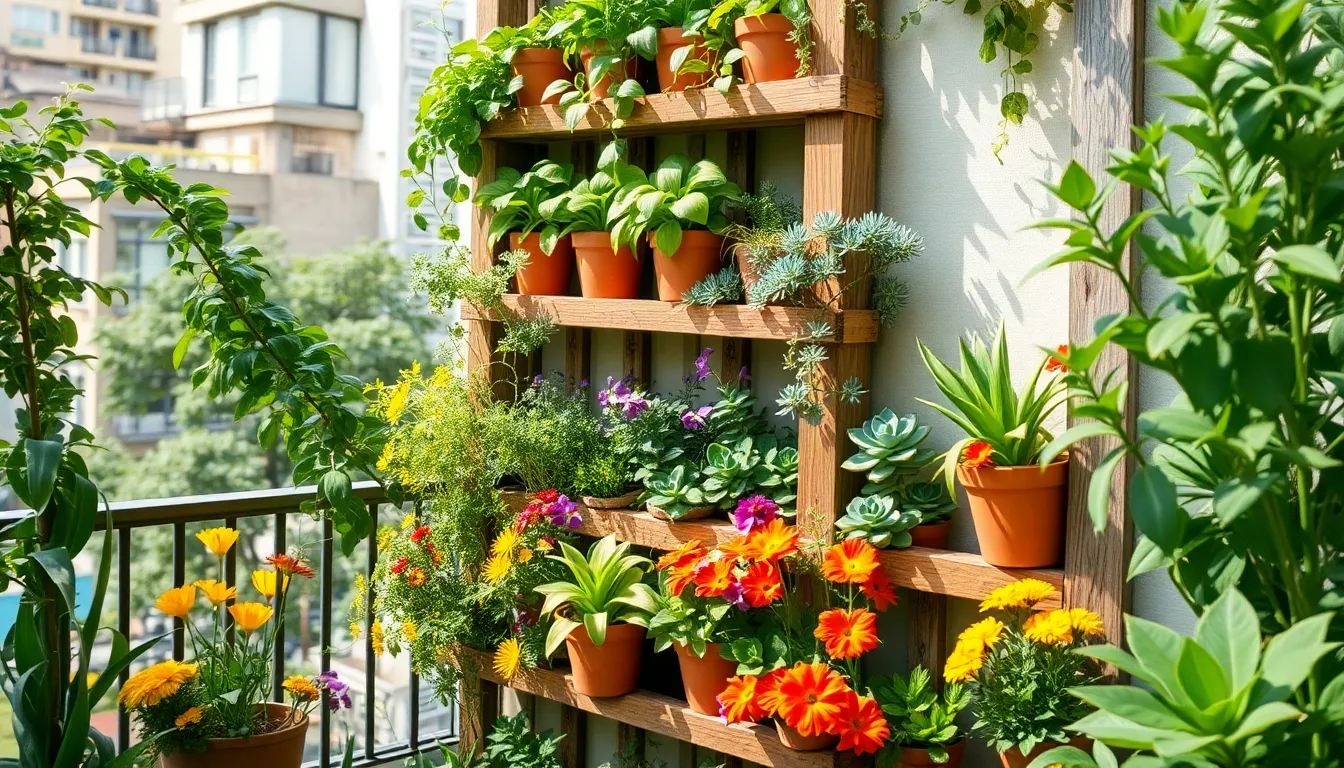In the delightful world of gardening, space can often feel like a rare commodity, especially for those of us nestled in urban environments. Yet, the solution to this conundrum might just be right in front of us—literally. Vertical gardening offers a refreshing way to cultivate plants upwards rather than outwards, making it a perfect option for both seasoned gardeners and enthusiastic beginners alike. This transformative approach not only maximizes limited spaces but also enhances the aesthetic appeal of any setting, turning walls into lush, living canvases.
The benefits of growing a vertical garden extend beyond just saving space; it’s a sustainable practice that can improve air quality and foster biodiversity. Whether you’re nurturing herbs in a cozy kitchen corner or creating a vibrant, green backdrop in your backyard, vertical gardening allows for creativity and sustainability to flourish hand in hand. In this article, you’ll discover practical tips on how to start your own vertical garden, the types of plants best suited for this style, and how to maintain your garden in different climates.
Whether you have a sprawling backyard or just a sunny windowsill, vertical gardening can open up new possibilities. It’s a chance to experiment with design and function, creating a green oasis that thrives upwards. As we delve into the world of vertical gardens, you’ll gain insights into innovative techniques and the tools needed to make the most of your vertical space, empowering you to cultivate your own vertical paradise.
Maximizing Space with Vertical Gardens
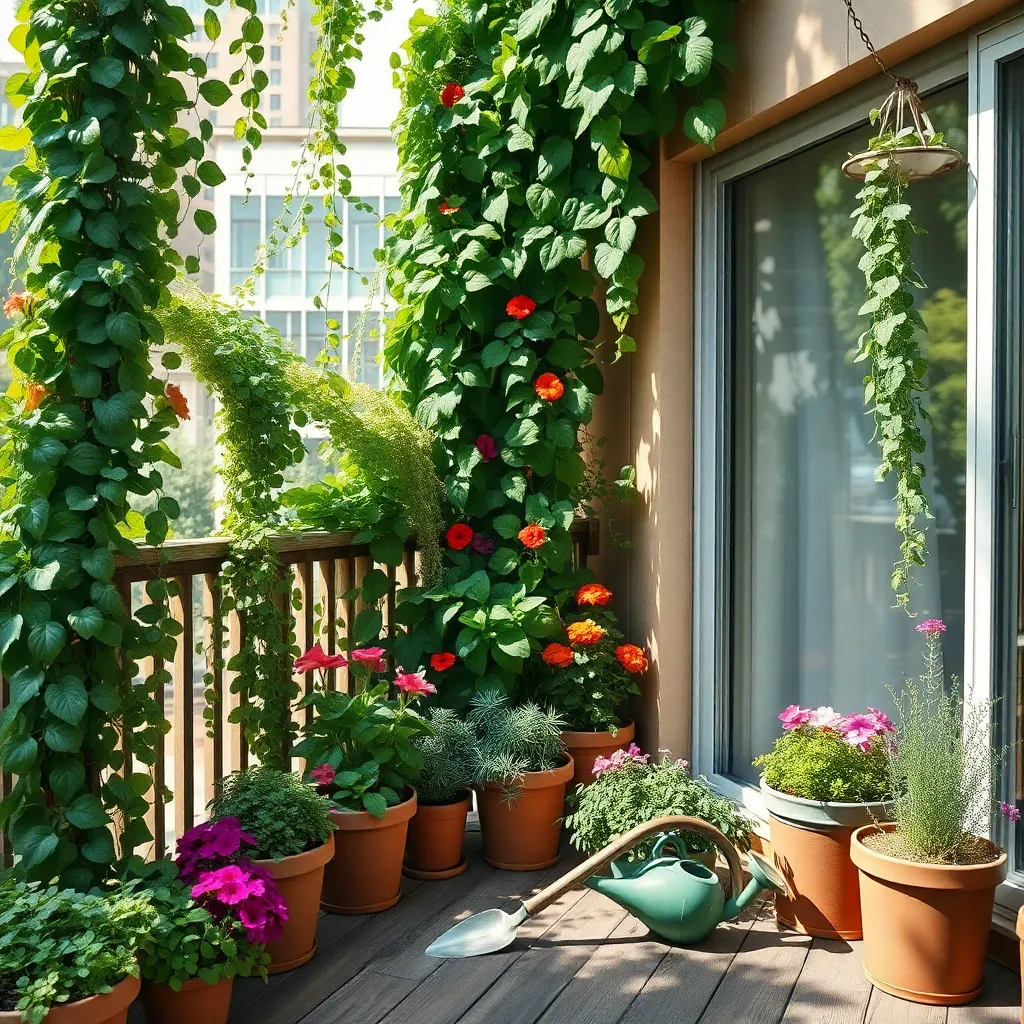
Vertical gardens are a brilliant solution for maximizing limited space in urban settings or small backyards. By growing plants upwards, you can transform walls and fences into lush, productive gardens.
To start a vertical garden, select lightweight planters that can be easily mounted on your chosen structure. Ensure your planters have adequate drainage to prevent waterlogging, which can be detrimental to plant health.
Choose plants that thrive in smaller soil volumes, such as herbs, lettuce, and strawberries, which are perfect for vertical gardens. For those with more advanced skills, consider plants like tomatoes or cucumbers, which require staking and regular pruning for optimal growth.
Watering is crucial in vertical gardens, as they tend to dry out faster than traditional beds. Install a drip irrigation system or water your garden daily, adjusting the frequency based on the season and plant needs.
Soil quality is another important factor; use a lightweight, high-quality potting mix enriched with compost to provide essential nutrients. Regularly applying a balanced liquid fertilizer can boost plant health and productivity, especially in the growing season.
For more advanced gardeners, consider incorporating a trellis system to support climbing plants. This not only maximizes space further but also makes harvesting easier and improves airflow around the plants.
Enhancing Aesthetic Appeal and Privacy
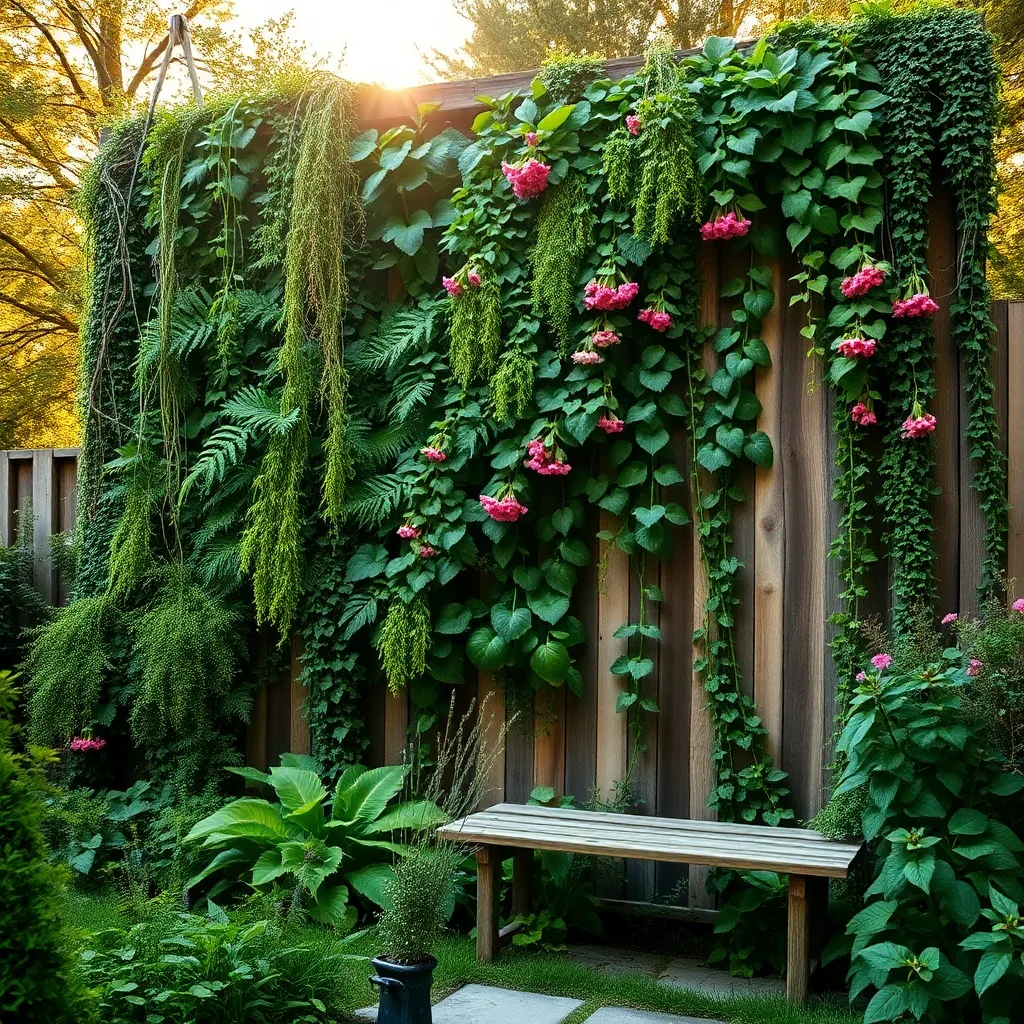
Vertical gardens are a fantastic way to enhance the aesthetic appeal of your outdoor or indoor spaces. By choosing a variety of plants with different textures and colors, you can create a lush tapestry that transforms any wall into a living work of art.
Incorporating vertical gardens can also provide privacy, especially in urban settings where space is limited. Use plants like ivy or jasmine, known for their dense foliage, to form natural screens that shield your garden from prying eyes.
To ensure the success of your vertical garden, it’s important to select plants suited to the specific light conditions of your wall. For shaded areas, consider ferns and hostas, while sun-loving plants like succulents and herbs thrive in brighter spots.
Providing the right care is crucial for maintaining the beauty and functionality of your vertical garden. Ensure proper watering by using drip irrigation systems that deliver moisture directly to the roots, minimizing waste and promoting healthy growth.
For advanced gardeners, experimenting with hydroponic systems in your vertical garden can boost plant growth and reduce soil-related issues. This technique allows you to grow a wide range of plants, even in areas where traditional soil gardening is challenging.
To maintain a clean and tidy appearance, regularly prune and trim your plants to encourage new growth and prevent overcrowding. Use quality pruning shears to make clean cuts and avoid damaging your plants, keeping your vertical garden looking its best year-round.
Improving Air Quality Naturally
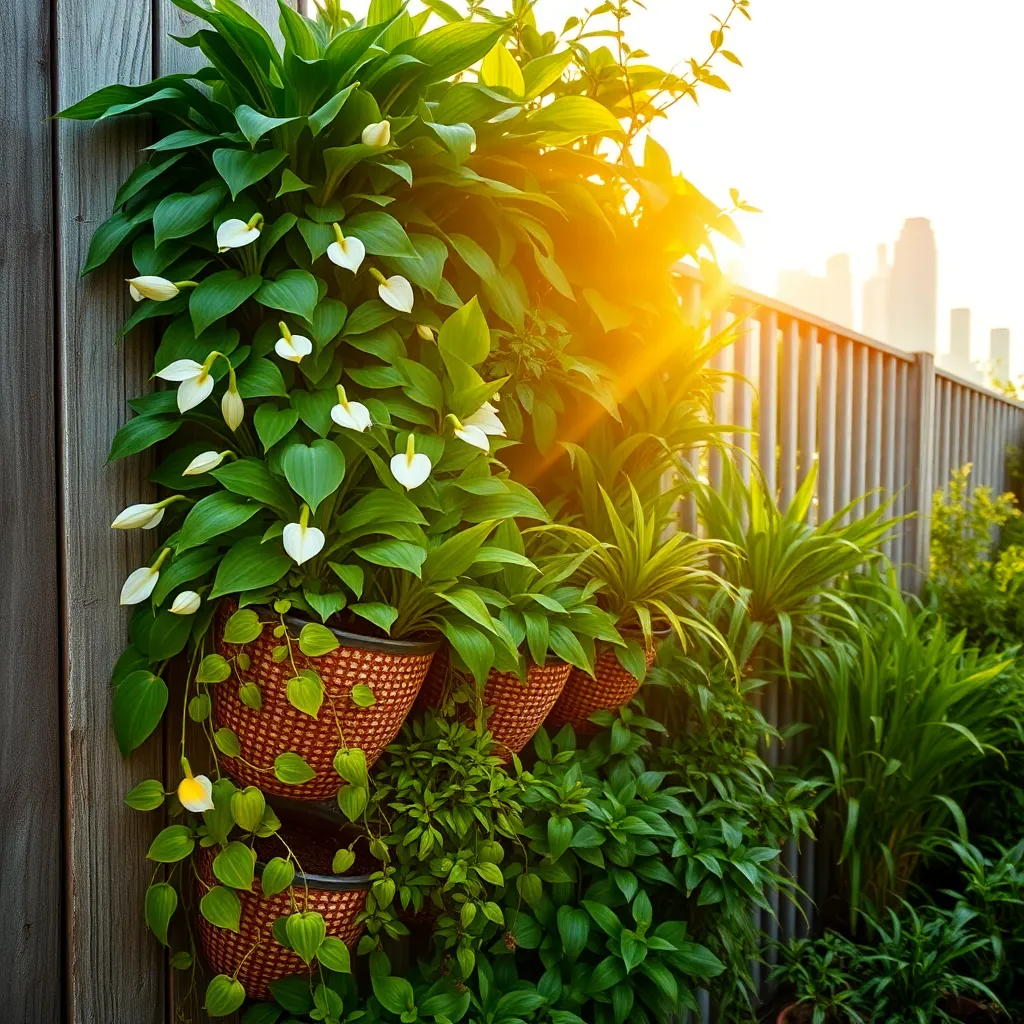
Vertical gardens offer a unique way to naturally improve air quality in your home or outdoor spaces. Plants are known to absorb carbon dioxide and release oxygen through photosynthesis, making them excellent natural air purifiers.
Choosing the right plants for your vertical garden can significantly enhance this air-purifying effect. Species like spider plants, ferns, and peace lilies not only thrive in vertical arrangements but are also particularly effective at removing toxins such as formaldehyde and benzene from the air.
For beginners, starting with hardy plants like pothos or philodendrons can be a great choice, as they require minimal maintenance. Ensure they are planted in a well-draining soil mix and receive indirect sunlight to keep them flourishing.
More experienced gardeners might explore adding herbs such as mint or basil, which can both purify the air and offer culinary benefits. These herbs prefer a sunnier spot in your vertical garden and should be watered regularly, allowing the soil to dry out slightly between waterings.
To maximize the air-cleaning efficiency of your vertical garden, consider a tiered system that allows for optimal air circulation around each plant. This setup not only enhances air quality but also prevents mold growth and encourages healthy plant development.
Boosting Plant Health and Yield
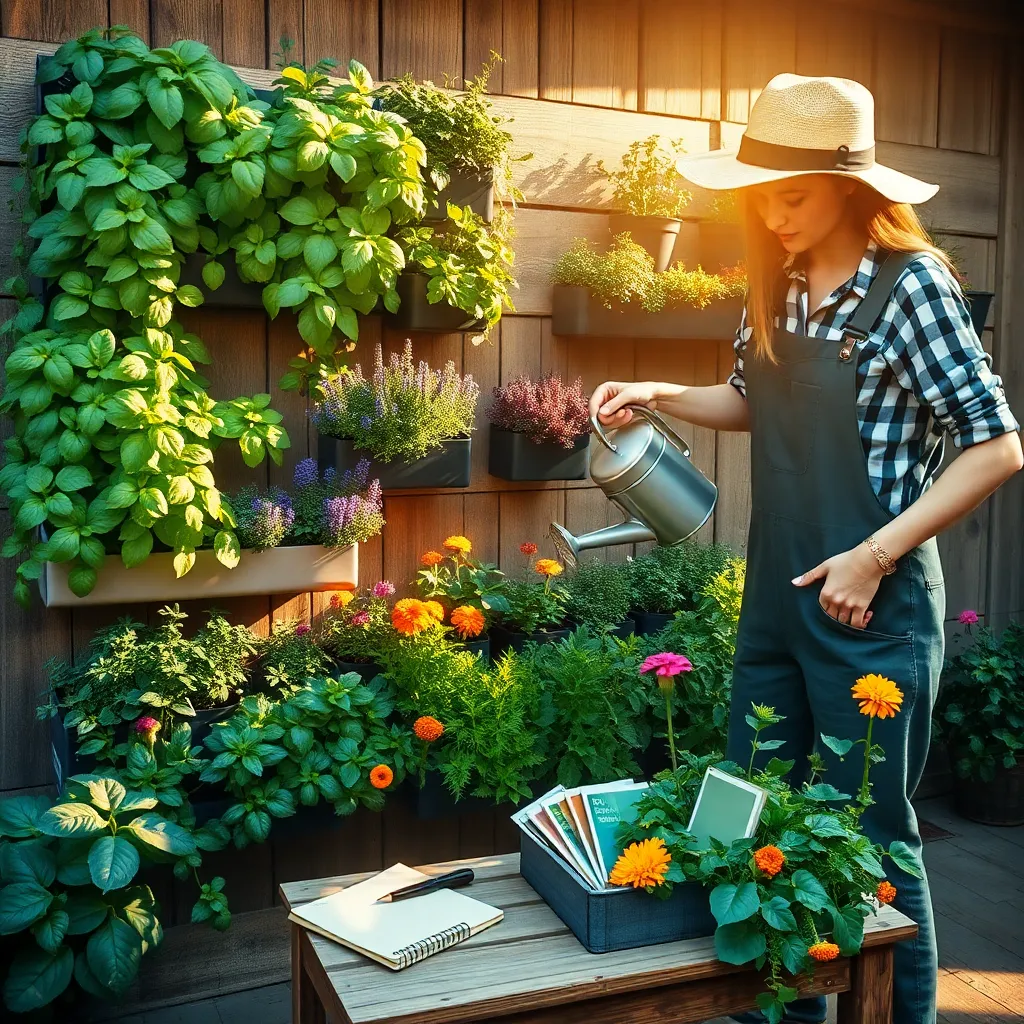
Vertical gardens can significantly boost plant health and yield by optimizing growing conditions. By elevating plants off the ground, you can reduce the risk of soil-borne diseases and pest infestations, leading to healthier growth.
To maximize your vertical garden’s potential, select the right plants for your environment. Choose species that thrive in well-draining soil and access to sufficient sunlight, such as herbs like basil and mint, which can flourish in vertical setups.
Regular maintenance is key to maintaining plant health in vertical gardens. Ensure you water consistently but avoid overwatering by checking the soil moisture regularly—most plants prefer to dry out slightly between waterings.
Advanced gardeners can experiment with companion planting to enhance yields further. By pairing plants that benefit each other, such as tomatoes with basil, you can naturally deter pests and improve flavor and growth.
Simplifying Garden Maintenance Tasks

Vertical gardens simplify maintenance by minimizing the need for extensive weeding and ground-level care. By elevating plants, you reduce the likelihood of pest infestations and soil-borne diseases that typically thrive in dense, horizontal garden beds.
Efficient watering is another advantage of vertical gardening, as gravity helps distribute moisture evenly across the plants. Consider installing a drip irrigation system, which is ideal for maintaining consistent moisture levels without overwatering.
To further simplify your garden upkeep, use lightweight, nutrient-rich soil mixes designed for vertical planters. These soils not only support healthy root growth but also improve drainage, ensuring that your plants receive the right balance of air and water.
For those with more experience, incorporating a rainwater collection system can optimize your watering routine and conserve resources. This sustainable approach not only benefits the environment but also keeps your vertical garden thriving with minimal effort.
Conclusion: Growing Success with These Plants
In conclusion, nurturing a relationship is much like tending to a vertical garden, where mindful effort yields flourishing results. We explored five key relationship concepts: the importance of communication, the necessity of patience and understanding, the value of shared goals, the benefit of personal growth, and the magic of cultivating joy together. By applying these principles, you can create a vibrant relationship that stands tall and strong.
To take immediate action, consider initiating a heartfelt conversation with your partner about one of these concepts today, fostering an environment where both of you can thrive. Remember, relationships are dynamic, requiring ongoing care and attention.
Don’t let these valuable insights slip away—bookmark this article now for easy access whenever you need a gentle reminder or a boost of inspiration. Looking forward, envision a relationship that not only endures but thrives through the seasons of life, filled with love, resilience, and shared happiness. Embark on this journey with confidence, knowing that every small step you take can lead to a more rewarding and fulfilling partnership. Together, let’s cultivate a garden of love that grows ever stronger.

